Most of you are likely familiar with Robert Louis Stevenson’s novel, Strange Case of Dr. Jekyll and Mr. Hyde. You’ve read the book, seen one of the movie versions (including The Nutty Professor), or know the story just in passing. By chance you don’t, it’s the tale of a respected doctor, Henry Jekyll, who experiments with and drinks a serum that changes him into an evil, demented, and murderous thug, Edward Hyde.
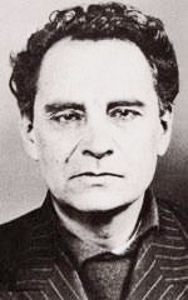
Today’s blog is about a man who comes as close to the story of Jekyll and Hyde as anyone I’ve ever run across. About the only difference is that Dr. Petiot did not drink serum to transform into the serial killer he was—he did it all on his own.
Did You Know?
After the Nazis successfully invaded France, Hitler decided he wanted France’s occupied zone to be on the same time as Berlin. So, he made Vichy change it. Today, Paris is still on the same time zone as Berlin (UTC+1; CET). France has thirteen separate time zones when its overseas territories are considered. Metropolitan France has only one-time zone called “Central European Time” or, CET. While we are familiar with the American time zones (Pacific, Mountain, Central, and Eastern), the world uses “Coordinated Universal Time” or, UTC. It is the primary time standard by which the world regulates clocks and time (it does not observe daylight-saving time). UTC is interchangeable with “Greenwich Mean Time” or, GMT. So, France and Germany are one hour ahead of UTC + 0 which runs through Great Britain. Prior to 1891, every French city and town was allowed to set its own time. However, once the trains started running, the government recognized the need to standardize the country’s time and they based it on solar time of Paris (historically speaking, hasn’t everything in France always revolved around Paris?).
After the August 1944 liberation, France decided not to return to the old time as the Allies were using the current one. I’m not going into the daylight-saving time issue as it really makes things complicated. Florida just passed a bill eliminating daylight-saving time but Congress has to approve it. I’m sure the Democrats and Republicans will find some way to bicker about this as well.
Let’s Meet the Good (but Crazy) Doctor
Marcel André Henri Félix Petiot (1897−1946) was born in Auxerre, France. During his childhood, Petiot committed many criminal acts including discharging a gun in school, robbery, and destruction of public property. It was also documented that he tortured small animals and enjoyed setting fires—all classic signs of a serial killer. Petiot was diagnosed as mentally ill and finished his basic education at a “special” school in Paris.
He served on the front during World War I where he was wounded and gassed. Sent to various rest homes, Petiot was arrested for multiple thefts. Thrown into prison, Petiot was again diagnosed with mental illness. So, what did the French officials do? They sent Petiot back to the front where he attempted to blow off one of his feet with a grenade. This exploit managed to get him honorably discharged (Corporal Klinger from M*A*S*H certainly would have been proud).
Petiot earned his medical degree in 1921 whereupon he set up practice in Villeneuve-sur-Yonne. He soon earned a nefarious reputation as a drug supplier, abortionist, and a thief. He also likely claimed his first victim in 1926. That same year, Petiot won the mayoral election which gave him the opportunity to embezzle the city’s funds. One year later, Petiot married Georgette and within a year, a son was born. By 1932, the citizens had figured him out and he moved his family to Paris.
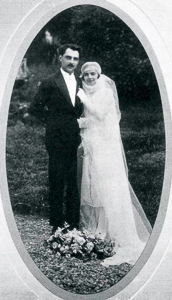
The Smoke and Smell
On the evening of 11 March 1944, five months before the liberation of Paris, Monsieur Marçais, resident of 22, rue le Sueur, called the police over his concern for the immense amount of black smoke billowing from the chimney across the street at number 21. He was worried about a potential chimney fire in the unoccupied house. The neighbors later noted that the smoke had been heavy for the prior five days and the stench was nauseating.
Two policemen arrived on their bicycles and attempted to gain entry but were not successful. A neighbor who knew the owner telephoned him. Dr. Marcel Petiot lived at 66, rue Caumartin, approximately fifteen minutes away by bike. He told the police to wait, as he would be right over with the keys.
After one half hour and no Dr. Petiot, the policemen were so worried about a fire that they called the fire department from which a truck and crew were sent immediately (the fire station still exists at 8, rue Mesnil). After smashing a window, several of the men were able to get inside the dark house. They followed the smell down to the basement where the most hideous scene unfolded.
The Basement
Two coal furnaces were blazing away with the dismembered remains of several humans inside. As the men looked around (lit by a flashlight), they saw skulls, arms, legs, and other human parts surrounding them. The odor and stench of decomposing bodies (or what was left of them) were too much. The police and firemen exited the basement and building.
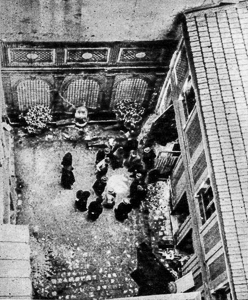
It didn’t take long for a large crowd to congregate outside the building. One of the onlookers approached a patrolman and identified himself as the brother of the building’s owner. He told the police that he knew about the bodies which he identified as Germans and French traitors. He managed to convince the policeman that he ran a large French resistance organization and then talked them into allowing him to take documents out of the building. Finally, the police allowed him to leave the scene on his bicycle with the promise they would not inform their superiors about him. It was later that the patrolman saw a picture of the building’s owner and realized it had been Marcel Petiot who they let get away.
The Courtyard and the Pit
When the police Commissaire Georges-Victor Massu arrived, a tour of the basement (now fully lit up), courtyard, and adjacent small buildings revealed even more ghastly scenes. Carefully stacked piles of human remains were on the floor, a bag containing a human torso was discovered, and bloody tools were lying around. Leaving the basement, they entered the courtyard and went into a small building which contained a triangular room. There were no windows or furniture. The walls were very thick and imbedded in the walls were numerous iron hooks. A viewing lens had been constructed in the wall so that someone could stand in the adjacent room and view whatever was going on in the soundproof triangular chamber.
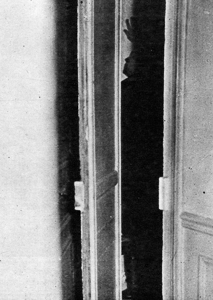
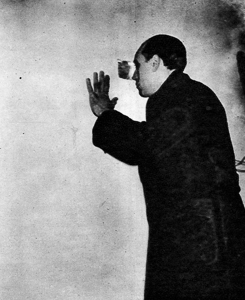
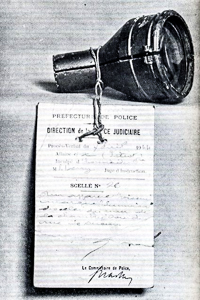
Moving on to the small carriage house, Massu and his team found a pit. A rope and pulley hovered above the pit. It was estimated that the depth of the pit was 12 feet. They quickly confirmed the pit was full of decomposing bodies layered with quicklime.
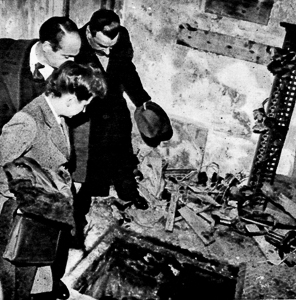
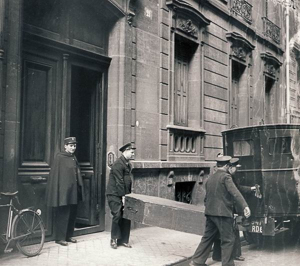
21, rue le Sueur (16e)
After moving to Paris, Dr. Marcel Petiot became a respected physician in the community. He bought the apartment on Rue Caumartin where he lived with his family as well as maintaining his medical practice there. He subsequently purchased the building at 21, rue le Sueur in 1941 and had extensive renovations done, especially in the basement and several other small outbuildings on the property. The surrounding wall was raised so that the neighbors could not see into the courtyard. A triangular room was built in the basement to exacting specifications, including only one entrance, thick walls, hooks embedded in the walls, and a peephole drilled into the wall to accommodate a viewing lens. Petiot quickly built a reputation for smuggling human cargo out of France and into South America. The furthest the human cargo made it to was the basement.
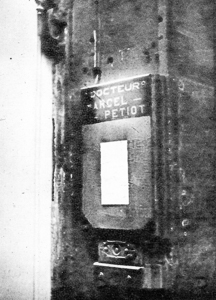
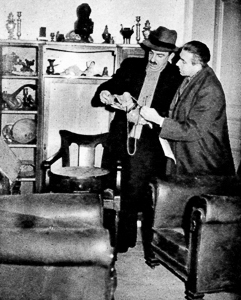
Occupation Activities
For years, Petiot passed himself off under various names, alias, and disguises. While practicing medicine, Petiot began an operation where he would promise to arrange safe passage out of occupied France to anyone who could pay his fee. Typically, these were Jews trying to escape deportation. However, there were many others, including gangsters, prostitutes, and even a 6-year old child, who sought out “Dr. Eugène” for travel assistance. He would advise them to bring lots of money and all of their jewelry. The first stop on their voyage was a visit to the basement of 21, rue le Sueur.
Discovery and Arrest
Shortly after the police discovered his basement, Petiot went into hiding telling his protectors that the Gestapo were after him. He managed to elude capture until 31 October 1944 when he was taken into custody. Many rumors about Petiot circulated throughout the liberated city including murders he never committed, that he had been a Gestapo agent, and even that the story had been made up by the Germans for propaganda purposes. In fact, well before the city’s liberation, the Gestapo knew all about “Dr. Eugène” and gave the French authorities orders to arrest him. Watch here.
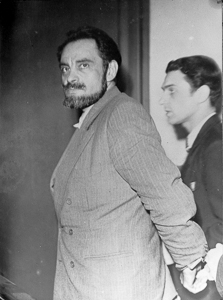
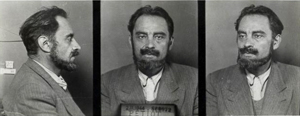
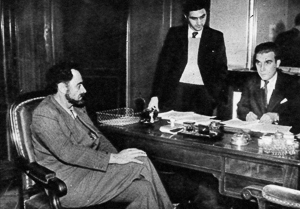
Trial, Sentence, and Punishment
During his trial in March 1946, Petiot acknowledged and took responsibility for the murders. His defense was that he ran a resistance organization and the victims were all German sympathizers or members of the German military. No one in any of the resistance networks could identify him nor could the authorities prove that any of the resistance groups he claimed to have belonged to actually existed. In the end, it was clear that Dr. Petiot was a serial killer (again and in hindsight, with all the modern day identifiable traits of a serial killer). Petiot was convicted of twenty-six murders but it is estimated that his victims totaled more than two hundred. Two months later on 25 May 1946, Petiot was beheaded in the courtyard of the Prison de la Santé. Walking to the guillotine, he advised his attorney and others to turn away as it “wasn’t going to be very pretty.” Watch the final proceedings of the trials here.
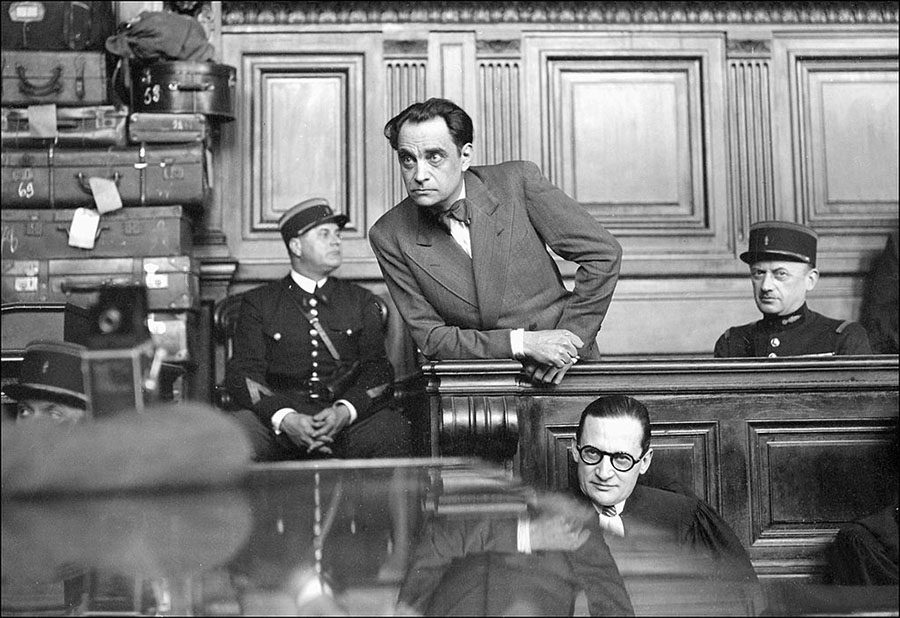
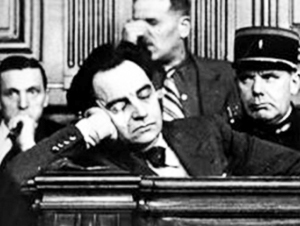
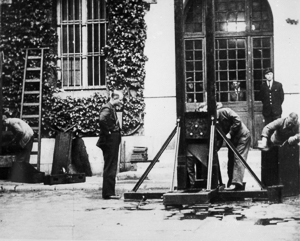
Demolition
The authorities found hundreds of empty suitcases as well as jewelry and other valuable items in the Petiot’s Rue Caumartin residence. The furnishings could be described as upper middle-class and Georgette wore expensive jewelry which she explained away as gifts from her husband. Although suspected of being an accomplice, Georgette was never charged and in the end, professed an ignorance of her husband’s activities. No one has ever figured out where Petiot had stashed all the cash, jewelry, and other valuables he stole from his victims.

The person who bought the building was very deliberate in taking it apart. The original building at 21, rue le Sueur was carefully demolished—brick by brick—in 1952. The buildings on either side are original from that time. You’ll notice the architectural style of the building sandwiched in between is quite different. Oh, by the way, the original basement remains intact.
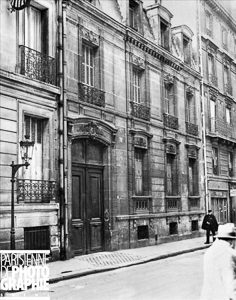
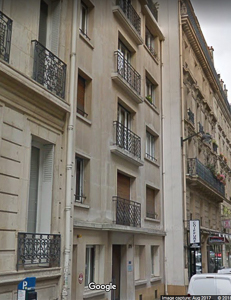
Recommended Reading and Viewing
King, David. Death in the City of Light. New York: Broadway Paperbacks, 2011.
Excellent book and easy to read. There are several other books on this subject but King’s book is the only one I’ve read. Well researched. I think they should make a movie about this story. Learn more about the book here.
What’s New With Sandy and Stew?
It’s hot and humid here in Southwest Florida. But hey, that’s normal for the summer here. We’re watching the hurricane forecasts every day. When you live here, some decisions are based on what might happen in a hurricane situation. So, most of you might say, “Why do you live there?” Well, many people asked why we lived in Los Angeles for more than three and a half decades dealing with the earthquakes. Do we move back to the mid-west and cross our fingers each spring hoping the tornadoes don’t come our way? See where I’m going with this? Perhaps we’ll move to Paris and wait for the Seine to flood.
Someone Is Commenting On Our Blogs
Thank you to everyone who sends us such nice compliments about the books. If you’ve read them (or even parts of the books), we’d greatly appreciate it if you could leave a brief review on Amazon. If you have any suggestions for ways to make our future books better, we’d love to hear from you with those specific suggestions. We’re getting into the high season for traveling. Hope many of you are making your way over to Europe and in particular, Paris.
Why Would You Want To Buy Our “Walks Through History” Books?
Simple.
You like to travel and experience history and historical events. You like to see original buildings that had a significant impact on the people and events of the history you’re engaged with. You want to know the stories behind the brick and mortar in front of you.
The walking tour books are meticulously researched so you can go directly to those sites and learn about the building’s history as well as an introduction to some of the more interesting people associated with it.
Thank You
Sandy and I appreciate you visiting with us. We have some exciting things on the horizon and we’ll keep you updated as we go along.
Share This:
Follow Stew:
Find Stew’s books on Amazon and iBooks.
Please note that we do not and will not take compensation from individuals or companies mentioned or promoted in the blogs.
Walks Through History
Copyright © 2018 Stew Ross

